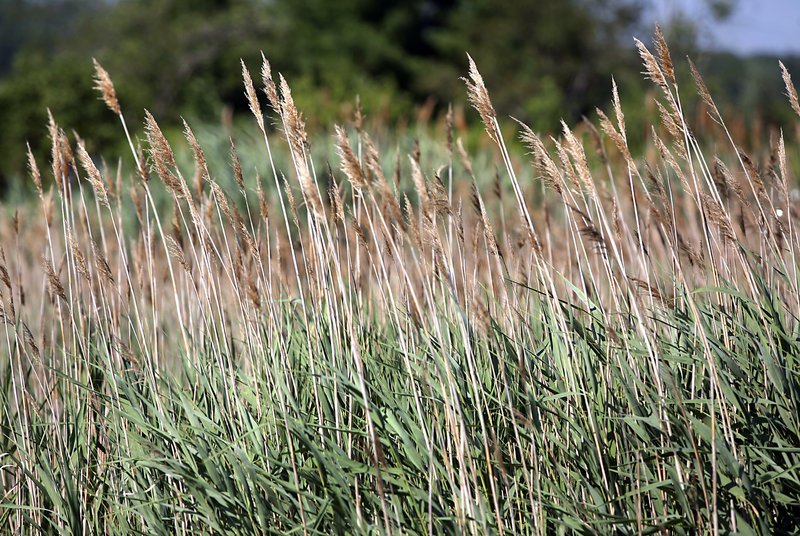Pete Hayes is looking for a few good volunteers who aren’t afraid of getting their feet wet to control invasive species in Scarborough Marsh.
A longtime volunteer with the Scarborough Marsh Audubon Center, Hayes is leading a training session Saturday on how to use GPS devices to survey parts of the marsh for Phragmites australis. The survey will take place July 18.
Phragmites australis, also known as the common reed, grows aggressively and crowds out native plants like cord grass and salt marsh hay that form the foundation of the salt marsh’s ecosystem.
The invasive plant — a native version is much less common — is so pervasive that people often mistakenly believe the tall, fluffy-topped grass is indigenous to the marsh. The inland side of Route 1 over the Dunstan River, by Anjon’s restaurant, is one highly visible place with a large patch of the invasive variety.
Phragmites australis covers about 100 acres of the 3,200-acre marsh, according to Scott Lindsay, a wildlife biologist with the state Department of Inland Fisheries and Wildlife, which owns the marsh and manages it with a number of partners.
Data from the survey will be transferred to GIS maps that will help track the extent of Phragmites australis and assess the effectiveness of control efforts. About 50 acres of high priority will be targeted for eradication over the next several years, Lindsay said.
The methods so far include herbicides, mowing and modifying sites to increase the amount of tidal salt water flowing around the plants.
Phragmites australis prefers freshwater — which explains why they proliferate in areas where there’s runoff from development — but tolerates the salinity by growing mats of vegetation.
“Our strategy is going to have to be continual maintenance. It’s not something we’re going to get rid of and it will be gone,” Lindsay said. “We’ll always be keeping an eye on it.”
Most of the seeds produced by Phragmites australis are not viable, but the plants produce many of them, said C.D. Armstrong, president of Friends of Scarborough Marsh. The seeds can travel on vehicles, including construction vehicles moving dirt, and quickly start a stand where they land, he said.
“If left totally unchecked, it would pretty much cover Scarborough Marsh,” he said.
Survey volunteers will use GPS to record the location of plants and to mark the perimeter of stands, Hayes said. He said he’s looking for people who are willing to spend a few hours doing this in the marsh, perhaps covering about a mile on ground that can sometimes be uneven.
“You can come back bug-bitten, a little mucky, but happy,” he said.
Staff Writer Ann S. Kim can be contacted at 791-6383 or at:
akim@pressherald.com
Send questions/comments to the editors.


